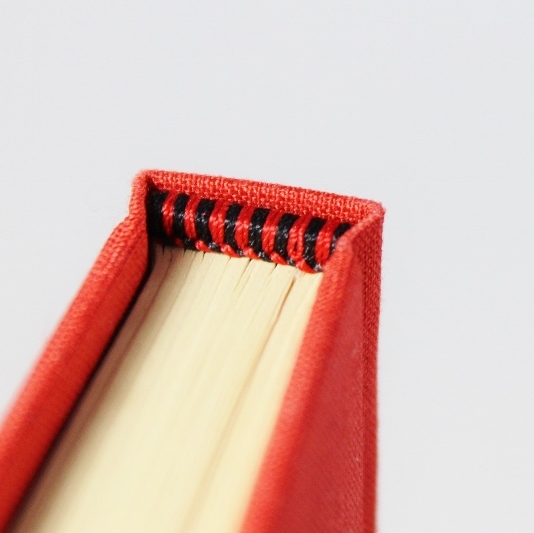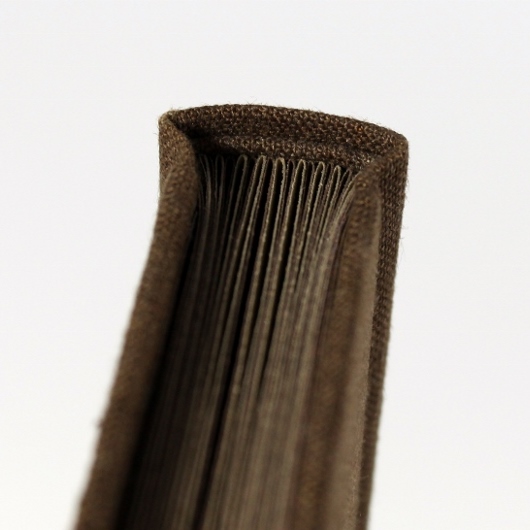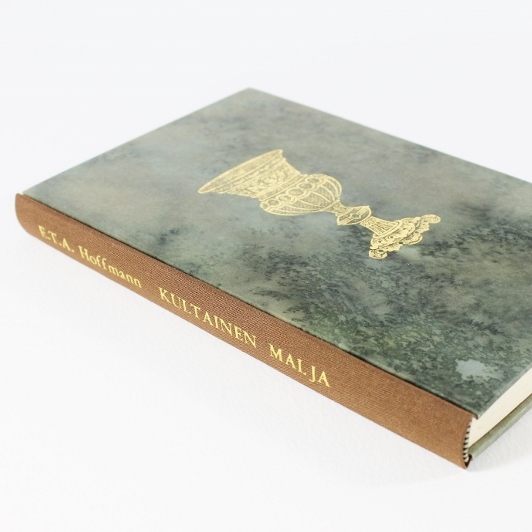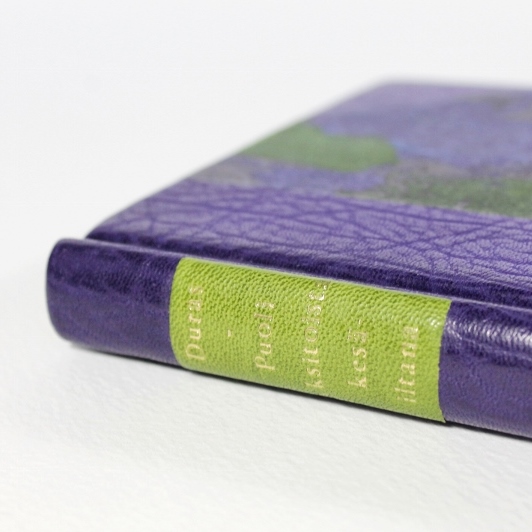A few weeks ago I wrote a post about the reasons why I became a bookbinder. This week I'll begin to explain how I became a bookbinder. I don't know how many parts this explanation requires, but I expect at least a couple. These are going to be very long and photo heavy posts, I apologise.
It wasn't that I'd always wanted to be a bookbinder, but more so that from the moment I learnt one could actually study to become a bookbinder, I wanted to go and study bookbinding. After all, it was better than any other option I'd considered. At that point I doubt I even considered the possibility of running a bookbinding business after graduating, I just wanted to study books and nothing but books.
I'll back up a bit now. I went to a very unconventional high school that focused heavily on creative writing and one of our additional art courses happened to be a course on bookbinding. The collaged crow book I shared in this post is one of the first books I made on that course. It's not one of the first books I ever made, since I'd made a couple hardcover notebooks when I was at elementary school (most likely with instructions from some old craft book we had around the house, using somewhat unsuitable materials and resulting in books that barely opened).
From the moment I learnt the correct technique for creating a functioning hardcover notebook I began experimenting with cover designs, often adding found material to my covers, and teaching myself new binding structures from the few books about bookbinding I managed to find. It wasn't until after high school, on a year-long art course that I learnt I could actually go and study bookbinding instead of going to university (which totally wouldn't have worked for me at the time even though I was basically really good at every subject but sports and music). On that art course I was so terrified of working on anything two dimensional I ended up making a lot of books instead. Drawing and painting, more or less paralysing. Building stuff (including books) is perfectly alright if not outright fun.
I started my bookbinding studies in Vammala, at Tyrvää School of Arts and Crafts (which, I think, was in my time referred to as Tyrvää School of Art and Design in English, but what do I know...) in 2004. My original plan was to go through a three-year artisan program, but after the first semester I swapped to a year-long apprenticeship program - not because I wanted to get out of school quicker, but because I found the artisan training super boring and slow paced. The apprenticeship training had two weeks of teaching and two weeks of independent studies alternating, and we had some fabulous guest teachers like Lester Capon and Nina Judin, just to name a couple. As Vammala is a small town with very little to do, I ended up working long hours at the bindery during the independent study weeks too, and learning a lot while at it.
The apprenticeship exam isn't actually linked to the apprenticeship program - it measures the skill level without the requirement of a formal education, so one could also study independently and then take the exam if one wanted to. I went through some mountains of paper to find what the exam requirements were (I couldn't actually remember what books were my exam books before checking my papers either).
In 2005 the exam took two days and we had a written exam as well as an interview with the master bookbinders that were evaluating us and our work. We also had to round and back a textblock we'd sewn beforehand. The main part of the exam was the evaluation of work we had prepared earlier. At this exam the list of requirements read as follows: one full and one half leather binding, one full and one half/quarter cloth binding, one album and one piece of work of student's own choosing. The full leather binding was required to have decorated edges and covers, and at least four of the books had to have a title on the spine. Beforehand I was pretty terrified of the exam, but in the end, it was a piece of cake.
If you're paying attention, you've already noticed that my full leather binding is missing from this lot of photos. It was a gift to someone, and the photos I took of it in 2005 are so horrendous it'll never be shown online (and honestly, I don't think it was that good). This student's choice wasn't a book at all (I checked beforehand, it was okay), but a handmade peg solitaire in a leather box. I'm still totally in love with this piece, and I really should make more leather boxes.
The books I bound for the exam were written by some of my favourite authors at the time: Marguerite Duras, Julio Cortázar and E.T.A. Hoffmann. Finding books to bind during the studies was actually a constant challenge; it was really hard to find (preferably cheap but good) books composed out of folded signatures one could easily take apart and re-bind in fancy covers. At that stage the skill level wasn't too high, so first editions and rarer old books were out of the question for a long time, and it felt like we were cranking out new bindings at a crazy pace. Still, loved it. So much. And I miss the board shear every day.










